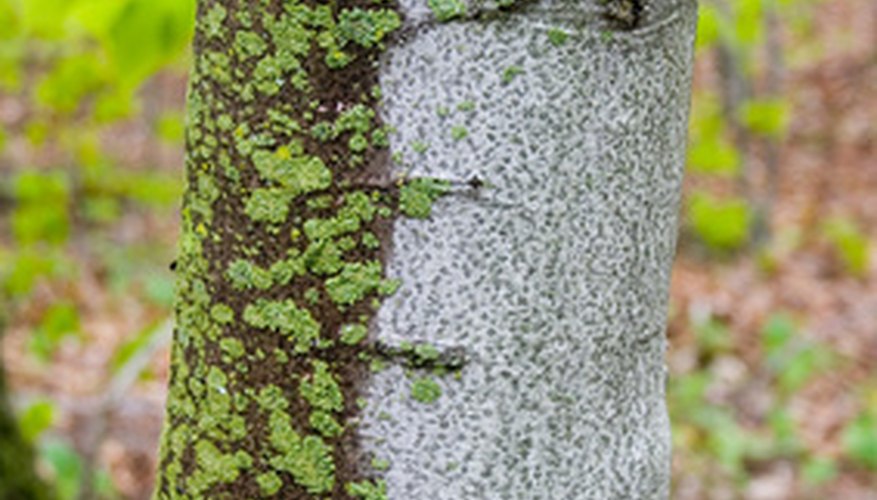With their distinctive white bark and graceful branching habit, white birch trees are prized ornamental landscape specimens. However they are susceptible to several diseases that can mar their beauty and even threaten their survival if left unchecked. Being aware of the common birch tree diseases and implementing timely treatments is key to maintaining the health and longevity of these iconic trees.
Anthracnose
Anthracnose is a fungal disease characterized by irregular brown or black spots on birch leaves It is one of the most prevalent birch diseases. As the spots enlarge, they can coalesce and cover entire leaves, causing defoliation Anthracnose also increases susceptibility to other problems.
Treatment: Apply fungicidal sprays at bud break to protect new foliage. Improve air circulation through proper spacing and pruning. Remove and destroy infected leaves.
Birch Canker
This fungal disease manifests as sunken, dead areas on birch bark. Cankers disrupt the flow of water and nutrients, potentially girdling and killing branches. Leaves beyond cankers may yellow and wilt.
Treatment Prune out infected branches. Avoid wounding the bark. Space trees properly and prune for airflow Apply preventative fungicide sprays
Bronze Birch Borer
Bronze birch borer larvae tunnel under the bark, disrupting sap flow. This can kill branches and eventually entire trees. Thinning crowns and D-shaped exit holes signal infestations.
Treatment: Maintain vigor through proper care. Cut and destroy infested branches. As a last resort, apply insecticides to protect trees. Remove severely infested trees to prevent spread.
Leaf Spots
Fungal leaf spots cause small black dots on birch leaves. These enlarged spots can lead to premature defoliation, reduced vigor, and susceptibility to other problems.
Treatment: Improve air circulation around trees. Remove and destroy fallen leaves to eliminate overwintering sites. Apply appropriate fungicide sprays at bud break.
Leaf Miners
Leaf miner larvae feed between leaf surfaces, creating winding, translucent trails. This stippling effect can turn leaves brown and scorched looking. It weakens trees and mars their appearance.
Treatment: Remove affected leaves. Apply systemic insecticides at bud break to reach larvae. Release or encourage natural parasitic wasp predators.
Scorch
Scorch causes browning leaf margins and tips due to environmental stresses like drought, excessive heat, or root damage. It can lead to premature leaf drop.
Treatment: Rule out and address underlying issues like poor drainage. Mulch and water appropriately, especially during dry periods. Improve conditions if feasible.
Heart Rot
Heart rot fungi decompose the inner wood, creating cavities and hollows. Trees can appear normal externally until they become prone to breaking.
Treatment: Maintain tree health and avoid wounding the bark. Consult an arborist about safety concerns and potential removal of advanced cases.
Wetwood
Wetwood bacteria cause wet areas and discoloration in birch wood. It leads to fermentation byproducts oozing from the bark, attracting insects.
Treatment: Improve drainage around trees. Apply fertilizer and maintain even soil moisture. Prune out affected limbs.
Preventing Birch Tree Diseases
Prevention is critical to avoid issues with birch diseases:
- Select resistant birch varieties when available
- Prune properly and avoid wounding trees
- Space trees appropriately and thin canopy for airflow
- Water deeply and fertilize to maintain vigor
- Apply mulch to conserve moisture and moderate soil temperature
- Monitor for early symptoms and treat promptly
- Remove and destroy affected branches and leaves
With timely intervention, most birch tree diseases can be successfully managed. However, it is important to properly identify the specific problem affecting your tree to ensure you apply the appropriate remedies. If you notice any concerning symptoms, consult a certified arborist right away for an accurate diagnosis and effective treatment plan. They can help protect the beauty and longevity of your landscape birches.
While their graceful form and striking white bark make them prized landscape trees, white birches are prone to several diseases that can negatively impact their health and appearance. Being vigilant in monitoring for signs of common birch tree problems like anthracnose, borers, and cankers allows for early treatment to avoid extensive damage. Combining preventative care with prompt treatment by tree care experts gives birches the best chance of thriving for years to come.
Whats infecting White Birches?
FAQ
What is a common disease for birch trees?
What is killing my white birch tree?
What does birch dieback look like?
How to know if a birch tree is dying?
- The Ultimate Guide to Growing Strawberries in Raised Beds - August 8, 2025
- No-Dig Garden Beds: The Easiest Way to Grow a Beautiful Garden - August 6, 2025
- How to Protect and Preserve Wood for Raised Garden Beds - August 6, 2025

